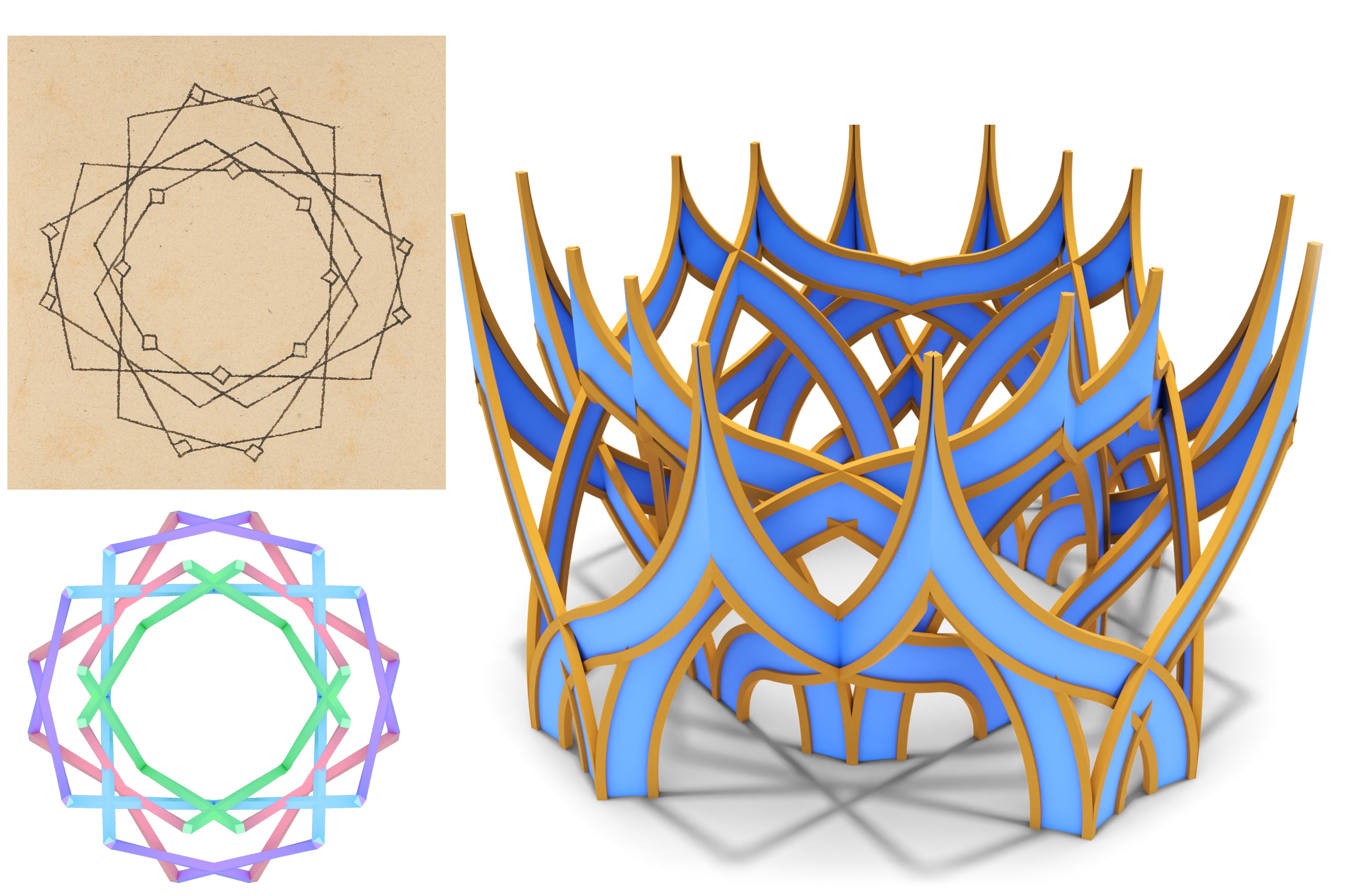- publication
- SIGGRAPH 2025
- authors
- Aviv Segall, Jing Ren, Martin Schwarz, Olga Sorkine-Hornung

abstract
Gothic microarchitecture is a design phenomenon widely observed in late medieval European art, comprising sculptural works that emulate the forms and structural composition of monumental Gothic architecture. Despite its prevalence in preserved artifacts, the design and construction methods of Gothic microarchitecture used by artisans remain a mystery, as these processes were orally transmitted and rarely documented. The Basel goldsmith drawings (“Basler Goldschmiedrisse”), a collection of over 200 late 15th-century design drawings from the Upper Rhine region, provide a rare glimpse into the workshop practices of Gothic artisans. This collection consists of unpaired 2D drawings, including top-view and side-view projections of Gothic microarchitecture, featuring nested curve networks without annotations or explicitly articulated design principles. Understanding these 2D drawings and reconstructing the 3D objects they represent has long posed a significant challenge due to the lack of documentation and the complexity of the designs. In this work, we propose a framework of simple yet expressive geometric principles to model Gothic microarchitecture as 3D curve networks, using limited input such as historical 2D drawings. Our approach formalizes a historically informed design space, constrained to tools traditionally available to artisans–namely compass and straightedge–and enables faithful reproduction of Gothic microarchitecture that conforms to physical artifacts. Our framework is intuitive and efficient, allowing users to interactively create 3D Gothic microarchitecture with minimal effort. It bridges the gap between historical artistry and modern computational design, while also shedding light on a lost chapter of Gothic craftsmanship.
downloads
video
acknowledgments
The authors express gratitude to the anonymous reviewers for their valuable feedback. The authors are deeply grateful to the Kunstmuseum Basel, especially to Ariane Mensger, for facilitating access to study the drawings in person. Special thanks to Ningfeng Zhou for proofreading and to Marcel Padilla for his spiritual guidance. The authors also extend their thanks to all IGL members for the discussions and support. This work was supported in part by the ERC Consolidator Grant No. 101003104 (MYCLOTH).